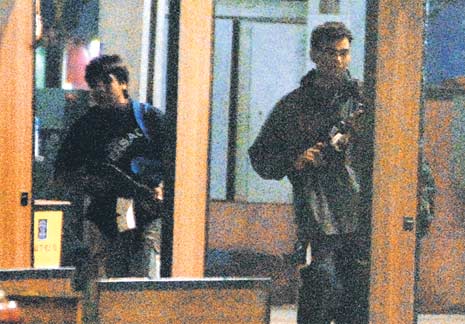 PIBBS
PIBBS Rethinking Our Responses to Terrorism

“We should balance the goal of reducing terrorists’ ability with the potential for our actions to aid in their efforts,” cautions Edward Orehek.
But there is little evidence that these strategies work. In fact, they may be doing more harm than good, say Edward Orehek and Anna Vazeou-Nieuwenhuis, authors of a recent article for Policy Insights from the Behavioral and Brain Sciences.

The Federation of Associations in Behavioral and Brain Sciences, or FABBS, with SAGE, the parent of Social Science Space, publishes the journal Policy Insights from the Behavioral and Brain Sciences. This annual journal features research findings in the sciences of mind, brain, and behavior that are applicable to nearly every area of public policy. The first issue comprises 33 articles in social and personality psychology focused on topics including health, education, justice, the environment, and inequality.
“It’s important to understand that terrorism is psychological warfare,” says lead author Orehek, a psychology professor at the University of Pittsburgh. Terrorism is an effort to reach political objectives by inspiring fear, perpetrated by people aiming to compensate for a lack of military power. If there is no emotional response, terrorism cannot achieve its desired outcomes. That puts governments in a tricky position: balancing the public’s need for information with the very real possibility of reinforcing terrorists’ goals of spreading fear.
To respond effectively to threats, governments and individuals need to reduce both terrorists’ ability to attack and their motivation. Yet most fail to understand the motivation component, write Orehek and Vazeou-Nieuwenhuis. When ISIS beheads a journalist in Syria or Boko Haram kidnaps schoolgirls in Nigeria, people can be tempted to explain the terrorists’ actions as “evil,” but that oversimplifies the situation. According to Orehek and Vazeou-Nieuwenhuis, terrorists have to believe two things to engage in violence:
- Terrorism is justified. Terrorists believe that they have a worthwhile cause that cannot be achieved through other means. Of course, not everyone with the same political goal becomes a terrorist. Research shows that one factor that spurs potential terrorists to violence is a quest for personal significance, or a desire to feel more valued and important. Another is a desire to attain higher social status when more conventional routes to power and respect are inaccessible.
- Terrorism is effective. Terrorists believe that violence will inspire enough fear to make people and governments take some sort of action. That action might be toward the terrorists’ political goals or it might be a military response that the terrorists can use to further justify their political position.
Understanding these motivations paves the way for dealing more effectively with threats, Orehek believes. “In some cases, the best strategy may be to limit reactions to terrorist actions,” he advises. In practice, this may include:
– Reducing media attention to terrorist attacks: Studies show that terrorist attacks cause people to experience stress, and the more media exposure they see, the more stress they feel. This suggests that extensive media coverage may actually help terrorists achieve their goals of spreading fear.
– Reconsidering terrorism awareness posters and campaigns: Posters with messages like “See something, say something” and color-coded terror alert systems not only cultivate fear, but they may play into terrorists’ desires to feel valuable and important. Besides, Orehek says, he is not aware of any research showing they are effective in reducing attacks. He points out that “the often-depicted abandoned backpack did not stop the Boston Marathon bombing in 2013.”
– Presenting alternatives to terrorism: Governments may be able to meet potential terrorists’ desires to feel significant and powerful in more positive ways, such as facilitating employment options and highlighting family obligations. Those strategies have reduced detainees’ endorsement of violence, according to some studies.
– Refraining from large military responses: Although many politicians and citizens clamor to see terrorists punished, Orehek cautions that large-scale displays of force may reinforce terrorists’ beliefs that their actions are justified and assist them in recruiting new members. In addition, he points out, it is not practical to respond to every terrorist action with military force.
“Knowing when to respond in what manner is difficult,” Orehek concedes, and the research he and Vazeou-Nieuwenhuis reviewed does not suggest how to react to specific situations like ISIS’s beheadings of Western journalists. But he is convinced of the need to pay more attention to terrorists’ motivations. “We should balance the goal of reducing terrorists’ ability with the potential for our actions to aid in their efforts,” he cautions.


























































































